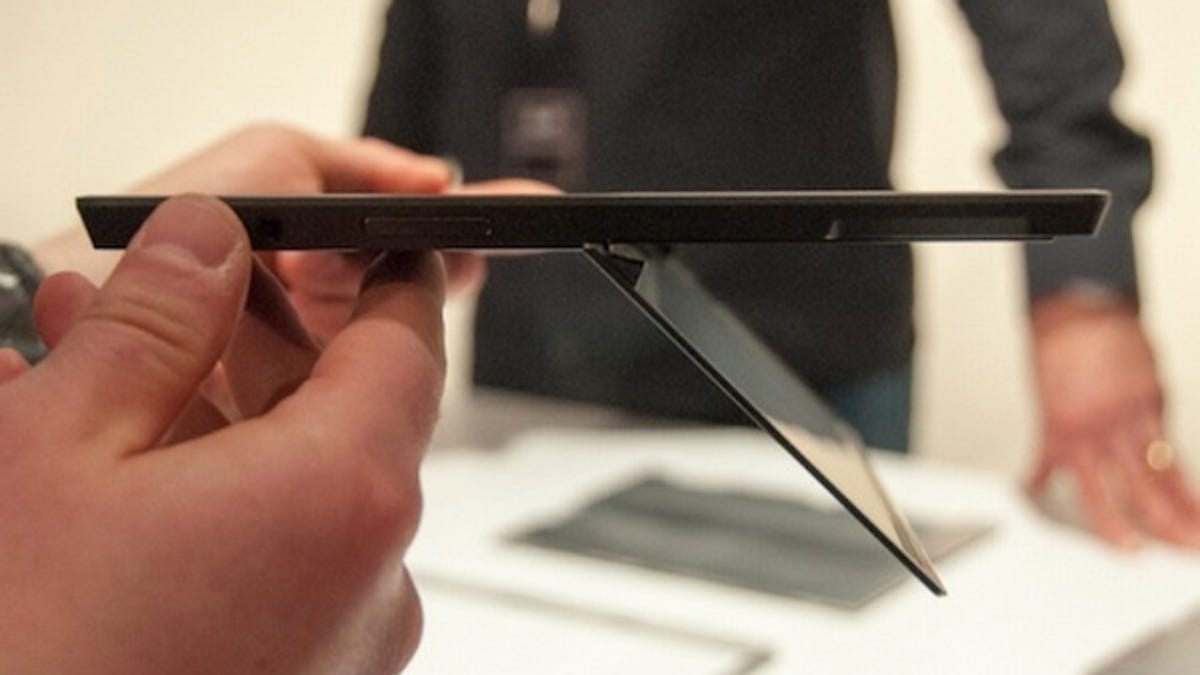Microsoft Surface sales well below shipments, says iSuppli
Microsoft's Surface RT sales weren't big, at least not initially, according to the market research firm.

Sales of Microsoft's first Surface tablet fell well short of the 1 million mark, while return rates were high, IHS iSuppli told CNET.
Shipments of the Surface RT device, which debuted last quarter, into the channel were about 1.25 million, but sales out of the channel "were significantly lower, maybe on the order of 55 to 60 percent of that figure," said Rhoda Alexander, an analyst at iSuppli, citing the market research firm's estimates.
That would put sales in the range of between roughly 680,000 and 750,000 based on those percentages.
That kind of "sales out" percentage is not unusual, however, according to Alexander, adding that she has seen similar percentages with newly introduced Android devices.
And, needless to say, almost every manufacturer's sales-out figure pales against Apple's, the gold standard, where the percentage is typically in the mid to high 90 percent range or even 100 percent. Apple sold 22.9 million iPads in its most recent reported quarter.
And Alexander said she sees little evidence of continued production of the Microsoft RT device -- which runs a limited version of Windows 8 on top of an ARM processor -- in the first quarter because Microsoft is still trying to sell off inventory.
But that inventory carryover is also not unique to Microsoft. The Amazon Kindle Fire, when it was first introduced, had excess inventory that carried over into the following quarter. As a result, Amazon temporarily cut production, Alexander said.
Surface RT has other challenges, too. The return rate on the device was "very high," Alexander said. "If you put the high return rate together with low sell-through [sales out] rate, that's indicative of a problem," she said, adding, again, that the Kindle Fire initially had very high return rates and low sell-through.
Why the high return rates? "It seems to be linked in a lot of cases to a steep learning curve of the [Windows 8] OS -- which is not necessarily intuitive," she said.
And another problem possibly looms big this year. There is a "distinct lack of interest" from device makers in pursuing RT devices at the moment, she said.
For Microsoft partners the question is, "where is the win for us?" -- according to Alexander.
During last week's earnings conference call, Chief Financial Officer Peter Klein repeated a number of times that Surface contributed to revenue. "Certainly this quarter [Surface] was a contributing factor to revenue growth in the Windows business," Klein said.
During the call, Microsoft cited Surface as a part of non-OEM revenue that grew 40 percent.
Microsoft has not talked about sales figures. And the company would not provide a number when contacted.
Microsoft is about to bring out a second line of tablets, the Surface Pro, that runs the full version of Windows 8 on top of a mainstream Intel processor. Alexander says she sees more momentum industrywide for these kinds of devices.

